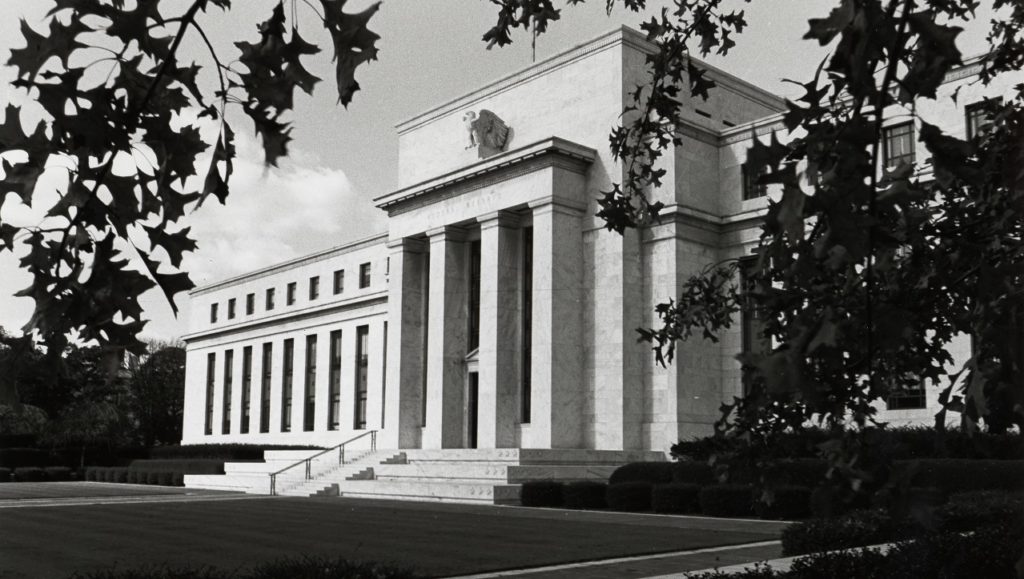The Fed Takes a Weak Swing at Inflation

The Federal Reserve came through with the second rate hike of this tightening cycle, bumping up the Fed Funds rate by 0.5%. It was the biggest interest rate boost by the Fed since 2000. But given the extent of the inflation fight, this hardly seems like a bold, aggressive move. In fact, it was a weak swing that looks more like shadow boxing. And one has to wonder just how long the Fed can stay in the ring.
The 50 basis point hike was expected and there was some speculation that the Fed would take a bigger swing with a 75 basis point hike. Instead, Federal Reserve Chairman Jerome Powell took 75 off the table, saying, “A 75 basis point increase is not something that the committee is actively considering.”
But Powell did hint that the FOMC will likely go for 1/2% hikes over the next “couple“ of FOMC meetings. That would move rates to 1.75 in July. This is hardly a tight monetary policy. In fact, a 1.75% Fed funds rate is still very accommodative.
The goal seems to be to push rates to 2.5% by the end of the year. This is also not particularly tight in light of 8.5% inflation.
And whether the economy can hold up that long remains to be seen. In fact, one has to wonder whether this second rate hike could be the last.
Powell continues to insist that the economy is strong enough to withstand tightening.
“Households and businesses are in strong financial shape, the labor market is very very strong, the economy is strong and is well-positioned to handle tighter monetary policy,” Powell said.
Never mind that GDP just contracted by 1.4% in the first quarter. And there are other signs that the economy is shaky. The Fed may have already pricked the housing bubble.
Of course, Powell will not come out and say, “Hey, this might crash the economy.” But he did hedge a bit, saying that raising rates “will be very challenging and will not be easy.” He also said that it will “depend on events out of our control.”
There were also some subtle changes in Powell’s messaging that seem to indicate there may be some economic turbulence on the horizon. Instead of saying the Fed can raise rates and bring the economy to a “soft landing,” he called it a “softish landing.”
Keep in mind that the people telling you the economy is strong enough to handle rate hikes are the same people who told you there was no problem in the housing market in 2006, insisted the housing problem was contained to subprime in 2007, and swore up and down for months that inflation was “transitory.”
As for shrinking the balance sheet, the Fed has pushed that back another month. It doesn’t even plan to start quantitative tightening until June.
“The Committee intends to reduce the Federal Reserve’s securities holdings over time in a predictable manner primarily by adjusting the amounts reinvested of principal payments received from securities held in the System Open Market Account (SOMA). Beginning on June 1, principal payments from securities held in the SOMA will be reinvested to the extent that they exceed monthly caps.”
As far as the nuts and bolts of balance sheet reduction go, the central bank will allow up to $30 billion in US Treasuries and $17.5 billion in mortgage-backed securities to roll off the balance sheet in June, July and August. That totals $45 billion per month. In September, the Fed plans to increase the pace to $95 billion per month, with the balance sheet shedding $60 billion in Treasuries and $35 billion in mortgage-backed securities.
At $95 billion per month, the Fed could shrink its balance sheet back to pre-pandemic levels in 7.8 years.
Needless to say, this is hardly an aggressive move against 8.5% CPI (much less the real inflation rate of somewhere in the neighborhood of 17%.)
The FOMC statement said, “The Committee is highly attentive to inflation risks.” Powell conceded that rising prices are putting the squeeze on families living paycheck-to-paycheck. Peter Schiff asked the operative question in a tweet. If the Fed is really concerned about inflation, why is it moving so slowly?
If it thinks a 2.5% Fed Funds rate is appropriate, why not just move rates to that level right now? If rates are too low, the longer they remain too low the more damage they will do to the economy. Inflation has already won!”
Call 1-888-GOLD-160 and speak with a Precious Metals Specialist today!
Buka akaun dagangan patuh syariah anda di Weltrade.
Source link






